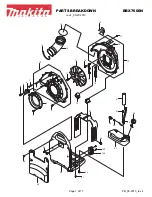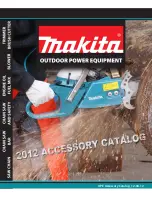
Show Control
585
MIDI Show Control
Eos Family consoles can receive MIDI Show Control (MSC) data from Net3 Show Control
Gateways and the built-in MIDI ports on a console or programming wing (when available).
There can be up to 32 sources, and these sources can be assigned Group IDs between 1 and
32. MIDI Show Control is one of many different types of MIDI signals – MIDI Time Code and
MIDI Notes are supported, but described elsewhere in this document.
Eos Family consoles can also transmit MIDI Show Control data.
MIDI Show Control Devices
MIDI Show Control data carries a device ID (MIDI channel) within the data packet. MSC setup,
see
, allows you to specify two device IDs: one for reception and one for
transmission. This is different than the ACN Group Tx and Rx IDs, which are the show control
gateway source ID and transmitting ID. The show control gateway, assigned an ACN Group Tx
and Rx ID, can send MIDI messages to and from several Device IDs all on the same MIDI line.
Only MSC data that matches the MSC Receive Channel in Setup, or an All Call ID (127), will be
interpreted by your console.
All outgoing MSC data contains the specified transmit device ID, as specified in Setup, see
.
Eos Family Command Interpretation
MIDI Show Control commands contain a Command Format, or device type that is intended to
receive a message. Eos Family devices will respond to Lighting—General messages. All other
command formats are ignored.
Eos Family consoles can receive the following MSC commands:
•
Go - runs a cue.
•
Stop - pauses a cue.
•
Resume - resumes a paused cue.
•
Set - controls a submaster, playback, or Grandmaster.
•
Fire - runs a macro.
In addition to the command and command format, the MSC commands also contain places for
transmitting devices to provide additional data, or data fields, which further specify the
intended action, like a submaster number. When Eos Family consoles output MSC, these fields
cannot be edited and correspond to the cue, submaster, or macro that is being executed.
The cue-related commands (go, stop, resume) have three fields – Cue Number, Cue List, and
Cue Path. Cue Path is not used by the console. Cue Number and Cue List are optional fields –
if they are not provided, the console runs the next cue on the master fader on the console. The
Cue List and Cue Number field, if provided, should match a cue list and / or cue number on the
console.
In the command/ effect tables below, if a field is present in the MSC data, the name is
indicated (such as “Cue”). If it is not present in the data, a “-” is indicated.
Go
When accompanying a MIDI “Go” command, data for the following fields will result in the
following actions:
Cue Data Field List Data
Field Action
Cue
List
Runs the specified cue in the specified cue list
Summary of Contents for Element Classic
Page 1: ...Ion Classic User Manual Version 3 1 1 4310M1210 3 1 1 RevA 2022 03...
Page 92: ...78 Ion Classic User Manual...
Page 212: ...198 Ion Classic User Manual...
Page 274: ...260 Ion Classic User Manual...
Page 275: ...Mark 261 Chapter 9 Mark About Mark 262 AutoMark 262 Referenced Marks 263...
Page 308: ...294 Ion Classic User Manual...
Page 346: ...332 Ion Classic User Manual...
Page 364: ...350 Ion Classic User Manual...
Page 378: ...364 Ion Classic User Manual...
Page 384: ...370 Ion Classic User Manual...
Page 426: ...412 Ion Classic User Manual...
Page 438: ...424 Ion Classic User Manual...
Page 444: ...430 Ion Classic User Manual...
Page 450: ...436 Ion Classic User Manual...
Page 458: ...444 Ion Classic User Manual...
Page 479: ...Magic Sheets 465...
Page 480: ...466 Ion Classic User Manual...
Page 530: ...516 Ion Classic User Manual...
Page 558: ...544 Ion Classic User Manual...
Page 578: ...564 Ion Classic User Manual...
















































